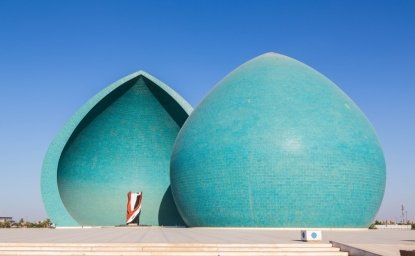The world was dumbfounded by the announcement in March that China successfully brokered the restoration of diplomatic ties between Saudi Arabia and Iran. The Iranian Foreign Minister announced in a news conference in Beirut a month ago that, “the two countries would open embassies in each other’s capitals within days.”
The national media in both countries initially downplayed the deal, however it made the front page around the world and started trending on social media in a few places. The deal included enforcement of two long abandoned agreements: one on security cooperation and a general agreement for cooperation in the fields of economy, trade, investment, science, sports and youth concluded respectively in 1998 and 2001 under President Mohammad Khatami and Crown Prince Abdullah. The aftershock of the black swan deal was twofold.
A series of crises and close calls spurred by Iran and antagonizing Saudi Arabia have swept the region since the breakdown of their relations seven years ago.
First, a series of crises and close calls spurred by Iran and antagonizing Saudi Arabia have swept the region since the breakdown of their relations seven years ago. Not only have they surpassed the original cause of tension underlying the severance of the diplomatic relations, but they also increased the enmity between the two rivals to unprecedented levels.
Second, the unpredictable deal does not mesh well with the course of negotiations. Despite two years of direct talks and more than five rounds of negotiations facilitated initially by Iraq and Oman respectively, they failed to reach agreement on a single issue on their agenda for lack of trust, mainly by Saudi Arabia, except for a temporary ceasefire in Yemen that was already violated couple of times by the Houthis.
Necessity over experience
Over the last sixty years the diplomatic relations between the two countries were severed three times—two of them after the Iranian Revolution in 1979. On each occasion, Iran initiated the friction and Saudi Arabia responded by cutting the ties. The first two boycotts in 1942 and 1987 lasted between two to three years and the relations were restored without help of a third country.
This time around, the severance lasted for seven years and three countries, Iraq, Oman and China, participated at different times in the reconciliation efforts in a clear demonstration of the degree of hostility that had grown between them. Saudi Arabia came to the negotiating table as a last resort as the war in Yemen was churning on without victory in sight, giving Iran the benefit of doubt. It was initially seeking Iran’s commitment to noninterference in Saudi Shia affairs and to stop its military support for the Houthis before restoring the relations.
However, prompted by the fragmentation of the Yemen coalition since 2015, the growing international irritation about the war, and the spiraling humanitarian crises in addition to the mounting costs, members of the coalition, especially the Arab countries either left, failed to deliver support, or pursued their private interests. The UAE withdrew large numbers of troops after sustaining rising casualties while pursuing its interests in Yemen. It seized the island of Socotra in the Indian Ocean and sought to capture the lifeline port of Hodeida through which 70 percent of imports and 80 percent of humanitarian assistance are channeled to war-stricken areas.
Egypt undertook a military training mission of Saudi forces and participated with Saudi Air Force in a very few sorties in Yemen, short of committing ground forces or extensive military support. Sudan drew down its participation in the coalition in the wake of incessant demonstration calling for speedy transfer of power to democratically elected civilian government and the lurking competition between the president of the Sovereign Council Abdel Fattah Burhan and his deputy Mohamed Hamden Dagalo (Hamidty).
Meanwhile, the Biden administration shifted its focus back toward NATO and redeployed some troops to Europe from Saudi Arabia after President Trump pledged in 2018 to downsize American involvement in the alliance. As a result, Saudi Arabia felt that Gulf security has slid back on the US priority list. Another sign of shifting American focus was the growing US-China standoff in the Pacific over Taiwan. Then came the last straw: the Russian invasion of Ukraine in February 2022 and the United States taking a front seat in building the war front.
These developments led to a serious turn that prompted Saudi Arabia to change course and opt for negotiations instead of confrontation with Iran.
Prenuptial or divorce?
As the relations between the two countries have undergone several ebbs and flows since their inception around 1940, it does not seem that the underlying rivalry between them will subside in the foreseeable future, given the number of outstanding issues, some of which involve threats to Saudi national security, such as the war in Yemen, the Shia minority in the Gulf, the Iranian nuclear program, and to a lesser degree the Iranian role in Syria and Lebanon.
The changing outlook of each country may pose another challenge to relations. The two countries have switched roles in relation to modernization.
The changing outlook of each country may pose another challenge to relations. The two countries have switched roles in relation to modernization. Almost 60 years ago, the shah of Iran called on Saudi Arabia to modernize and open up the Saudi society to other cultures; King Faisal of Saudi Arabia replied by reminding the Iranian leader that he is the Shah of Iran, not of France. Now it is Saudi Arabia’s turn. Its Vision 2030 plan serves as a symbol of openness to Iran. If the Iranian regime feels threatened by the Saudi overture to modernity, a potential hotbed may develop adding to the long list of bilateral irritations.
Furthermore, the creeping undercurrent of revolutionary export from Iran is still alive in the region, and unless Iran has alleviated these fears, the agreement would hang in the balance. However, it is likely that the political atmosphere between Saudi Arabia and Iran will improve in the short term. The agreement will lead to easier communication, building confidence and reducing friction. This time, Iran has high stakes in economic, security and political outcomes. Therefore, while the agreement stopped short of being a full prenuptial, Iran will most likely endeavor not to put the relationship in danger of another risky divorce—at least in the short term.
China’s prudent foreign policy
During Chinese participation in the first Arab-China summit, held last December in Riyadh, President Xi Jinping offered his office to Saudi Arabia in the ongoing negotiations with Iran. Most likely the Chinese had the green light from Iran to lead the reconciliation efforts. President Ebrahim Raisi visited China last February, the first state visit by an Iranian president to China in twenty years. In 2021, the two countries signed a 25-year strategic cooperation agreement. China has become the largest importer of the Iranian oil since 2017 and used subterfuge to help Iran sell its oil abroad despite US sanctions.
China is also the largest single importer of the Saudi oil (more than one third of Saudi annual production) and enjoys a long economic relationship with the kingdom. For Saudi Arabia, the Chinese offer was as good as it gets. The Yemen war was getting nowhere and almost every member of the coalition was jumping off the boat. China is an economic powerhouse with a soaring international political role, a permanent member of the UN Security Council, a member of the Group of Twenty, and the Asian club.
Being the broker of the Saudi-Iranian agreement and the host of the final round of negotiations, China has high stakes in its success.
On the other hand, the United States had suspended the sale of certain arms to Saudi Arabia and ended all support for the invasion of Yemen. Nor was the EU in favor of the war since its inception and has grown more critical as the humanitarian crises there worsened. Being the broker of the Saudi-Iranian agreement and the host of the final round of negotiations, China has high stakes in its success. It is likely that China will keep the Saudis and Iranians on a short leash in order to bridge the confidence gap and use its leverage over Iran for a settlement in Yemen.
It will probably try to play a similar role to that of the United States in the Egyptian-Israeli negotiations that led to the peace treaty between them in 1979. The US was not only a host of the negotiations and a witness to the peace treaty, but an honest broker throughout the strenuous negotiations and a guarantor of their implementation. The Chinese-brokered agreement demonstrates the growing appetite of China to prove its political strength.
Last month, it hosted the first meeting of foreign ministers of Saudi Arabia and Iran since they cut ties in 2016. The Chinese role is expected to continue after the resumption of relations and reopening of embassies and it will continue shepherding talks, especially regarding the situation in Yemen, where no other superpower has the same leverage among all parties.
Despite the apparent determination of China to help the two countries reach a settlement, particularly in Yemen, it faces several uncertainties arising from the loosely knotted March Agreement that may require its cooperation with the US to ensure its implementation.
The views expressed in these articles are those of the author and do not reflect an official position of the Wilson Center.








